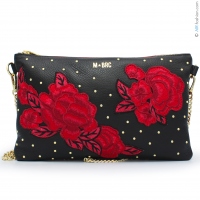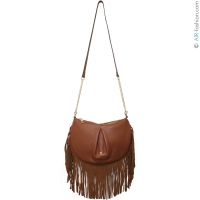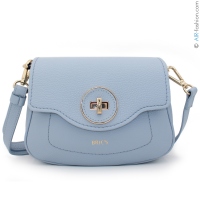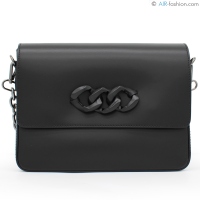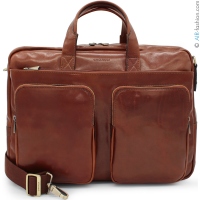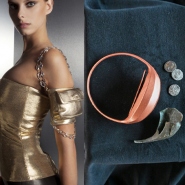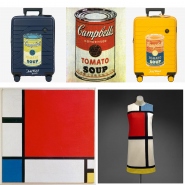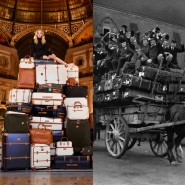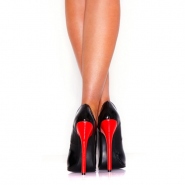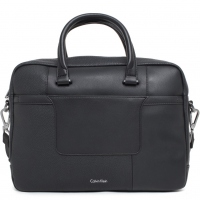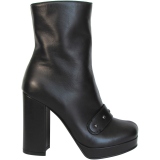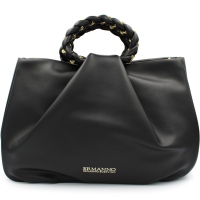Sometimes, you don’t have to go to fashion boutiques searching for new items from the latest collections to look extraordinary and uncommon. All you need to find a trendy outfit is to look into your granny’s old closet.
That’s because most designers themselves are inspired from vintage fashion. Stylists from Versace, Tory Burch, Dolce & Gabbana, and Isabel Marant bring old trends back, making them trendy again.
In the recent decade, the style known as “Vintage” is becoming increasingly popular among young people.
Here, I’ll tell you in detail: what this style is, how you can create a vintage look, and what last century’s clothes are back in fashion.

Background
The word “vintage” came into common use from the wine industry. This was the name for a high-quality wine that has been aged in perfect conditions for decades. Over time, this word began to be referred to accessories, clothes, and cars, implying items from previous generations and eras that retain their value and charm.
Vintage first came into fashion in the 1950s. Even then, fashionmongers were buying and wearing thirty-year-old garments. The next vintage boom happened in the 1990s. Clothes with a history attracted popular stars of that time – Kate Moss, Dita Von Teese, and Renee Zellweger.
Even nowadays, the affection for vintage is still strong and finds its reflection in modern fashion trends.
Vintage style reflects the previous century’s fashion trends, but such items don’t look outdated and boring. On the contrary, high-quality vintage includes expensive products that not everyone can afford. Even though some designers create modern collections imitating older ones, copying clothes, shoes, and accessories from the originals, true vintage connoisseurs claim that items made in the 21st century will never have the energy and attractiveness inherent in the products of the previous 20th century.
How to create a vintage-style look
Here are some rules so that you can choose the right things from your granny’s time to create a vintage style:
-
Vintage clothes or accessory is an original item that is at least 30 years old, embodying a bright trend from the previous generation.
-
A vintage item is a product made in the 1920-1980s and preserved to in good condition to the present days, but not a new garment sewn this year.
-
Items made to order in a unique copy are incredibly valuable. It must be clothes made by a stylist or a fashion atelier master of that time. But not only! If you’ve found a well-preserved dress made once upon a time by your grandmother according to the fashion of her time, this thing will be valuable as well.
-
To create a vintage look, you should decide on the years and style. Vintage is usually divided into decades: for example, 1920s’ fashion, 1960s’ fashion, etc.
There are two main directions of vintage:
-
Classic vintage – extremely high-quality products from designer collections of the past. Such items have preserved fabrics, lace, and decor. This clothes’ appearance clearly indicates their high price.

Chanel suit/ 1965 Chanel
-
Neovintage – clothes made in present days, precisely imitating vintage items. Designers produce fashion collections from modern materials, trying to recreate the styles, silhouettes, and decor that their predecessors used in the previous century.

“Modern” vintage
“Vintage” decades
The 1920s

An era of freedom and a sharp turnover in the image of all women. The beauties of that time usually cut their hair, making their dresses shorter at the same time. Plain knee-long dresses and skirts made of satin, silk, and velvet showed charming women’s legs and shoes.

Modern interpretation
The 1930s

A time of glamour and glitter. All the clothes emphasized women’s shapes – the neckline and waist were especially highlighted. Decorating a look with expensive furs and jewelry was believed to be a special chic. Dresses for an evening out were made of expensive materials, and no money was spared for the decor – bright decorations, leather, lacquer, velvet, and fur accessories were used.

Modern interpretation
The 1940s

It was a difficult time in the history of humankind, which of course affected fashion as well. Women preferred to wear functional comfortable clothes, vaguely resembling a military uniform. Designers no longer offered models of complex silhouettes, and decor completely disappeared from women’s fashion lines. Women wore men-like clothes of dark colors, primarily caring about comfort, but not about their beauty.

Modern interpretation
The 1950s

A time when femininity was in fashion again! Bouffant skirts combined with a tight top were the most popular. Or a reverse set – a jacket with wide shoulders was worn with a tight pencil skirt. Accessories were becoming increasingly important in women’s look: small hats, handbags, beads, and brooches.

Modern interpretation
The 1960s

A radical change in women’s image – boy’s short haircuts were back in fashion. A teasing and scandalous mini skirt was in fashion for the first time, showing legs above the knee. Extraordinary shoes also appeared in the 1960s. Platform shoes, stiletto high boots, ankle boots with a wide top –our mothers and grandmothers were wearing all of these in the middle of the previous century.

Modern interpretaion
The 1970s

Flared trousers made up a casual look, which matched great with plaid shirts, tunics, and jumpers with ethnic patterns. The introduced vintage blue jeans and sneakers became a sign of success and accompanied both women’s and men’s look. The hippie style spread all over countries and continents, and the spirit of freedom and rebellion also found its reflection in fashion.

Modern interpretation
The 1980s

An era of sport and convenience. Classic-style clothes became casual items – restrained colors, jackets and skirts of plain silhouettes. An underwear-style top or blouse could be an exquisite element of a business look. For holidays and meeting friends, fashionmongers chose sports-style clothes. Jeans and sneakers remained in fashion as well, winning over consumers’ hearts with comfort and convenience.

Modern interpretation
Now you can choose that direction of the vintage-style look that appeals to you, and select suitable clothes and accessories!





 Online Shop
Online Shop
 Terms and Conditions
Terms and Conditions
 Payments
Payments
 Feedback
Feedback
 Customer Support and Contacts
Customer Support and Contacts
 Discounts
Discounts
 Worldwide customs duties
Worldwide customs duties


 English
English
 Русский
Русский
 Deutsch
Deutsch
 Español
Español
 Français
Français

 +39
+39 info@air-fashion.com
info@air-fashion.com  Enter
Enter
